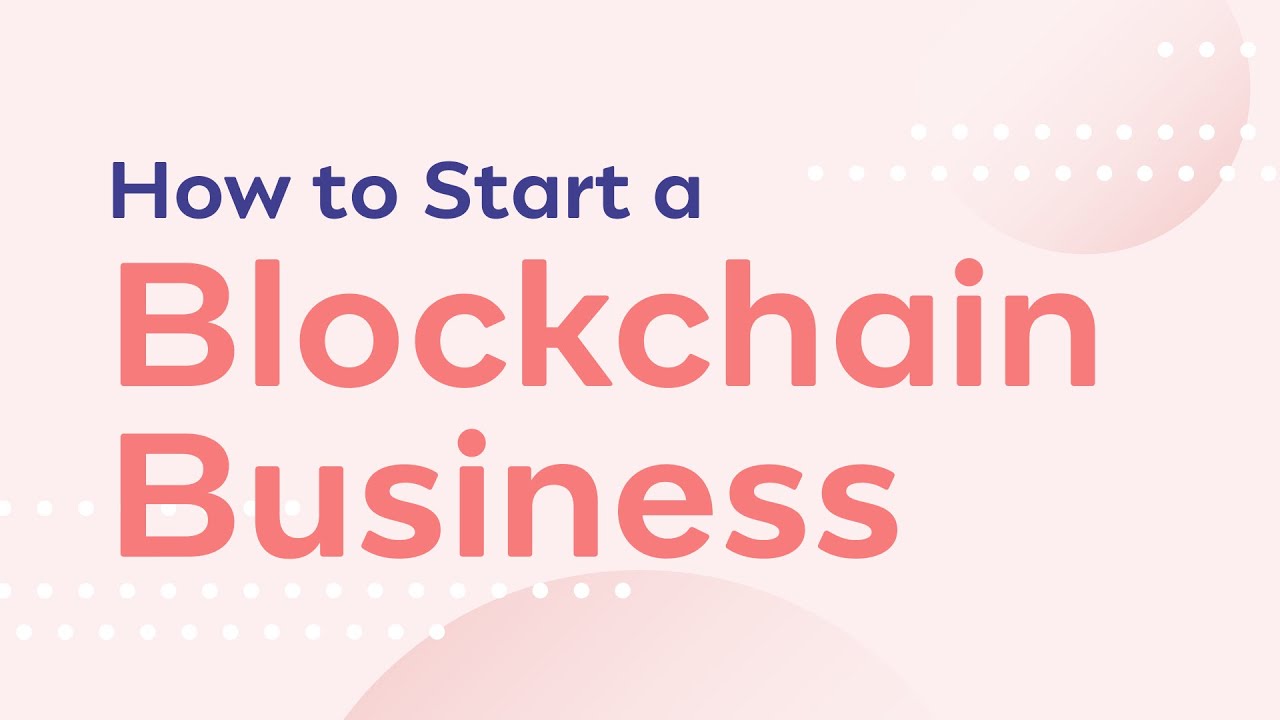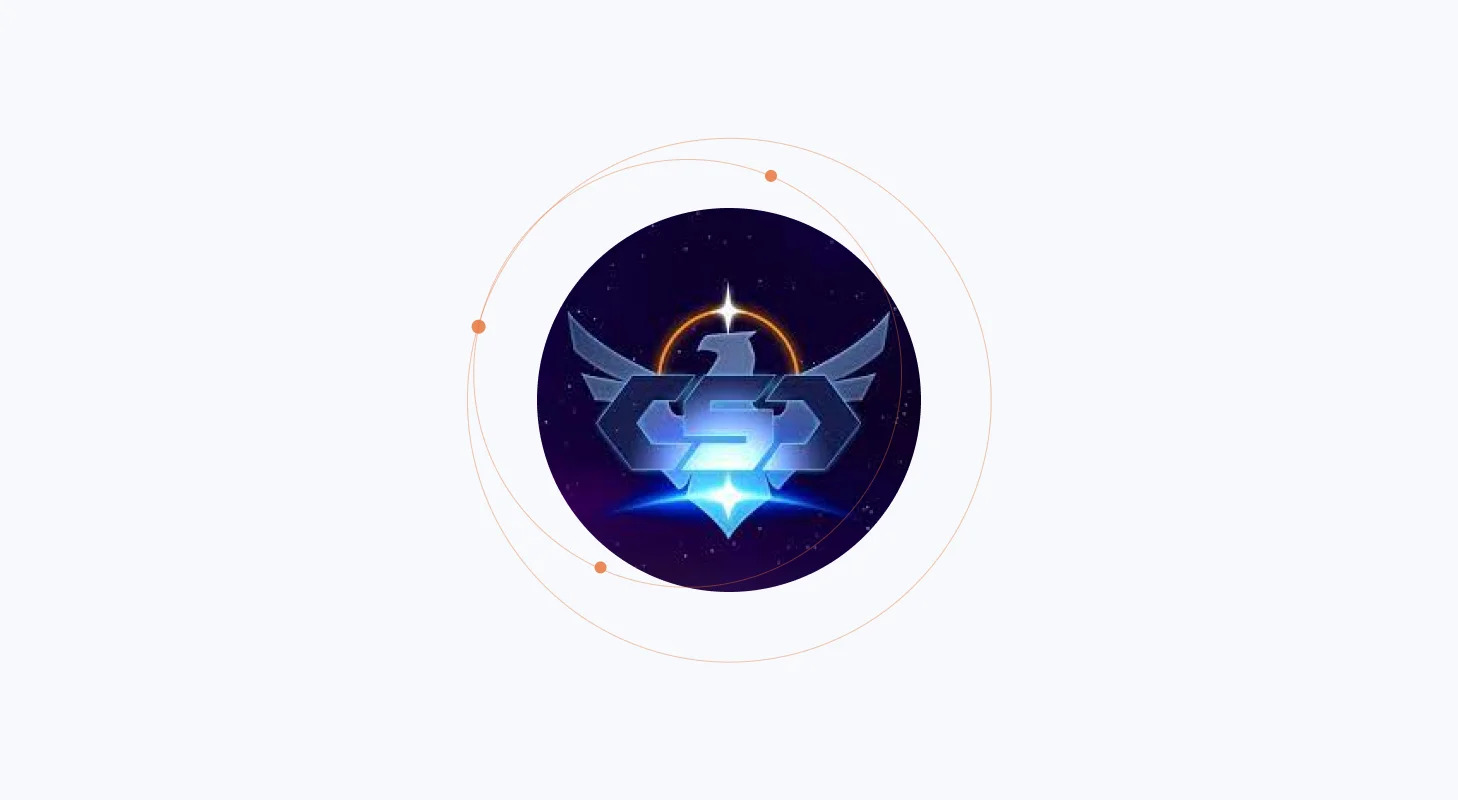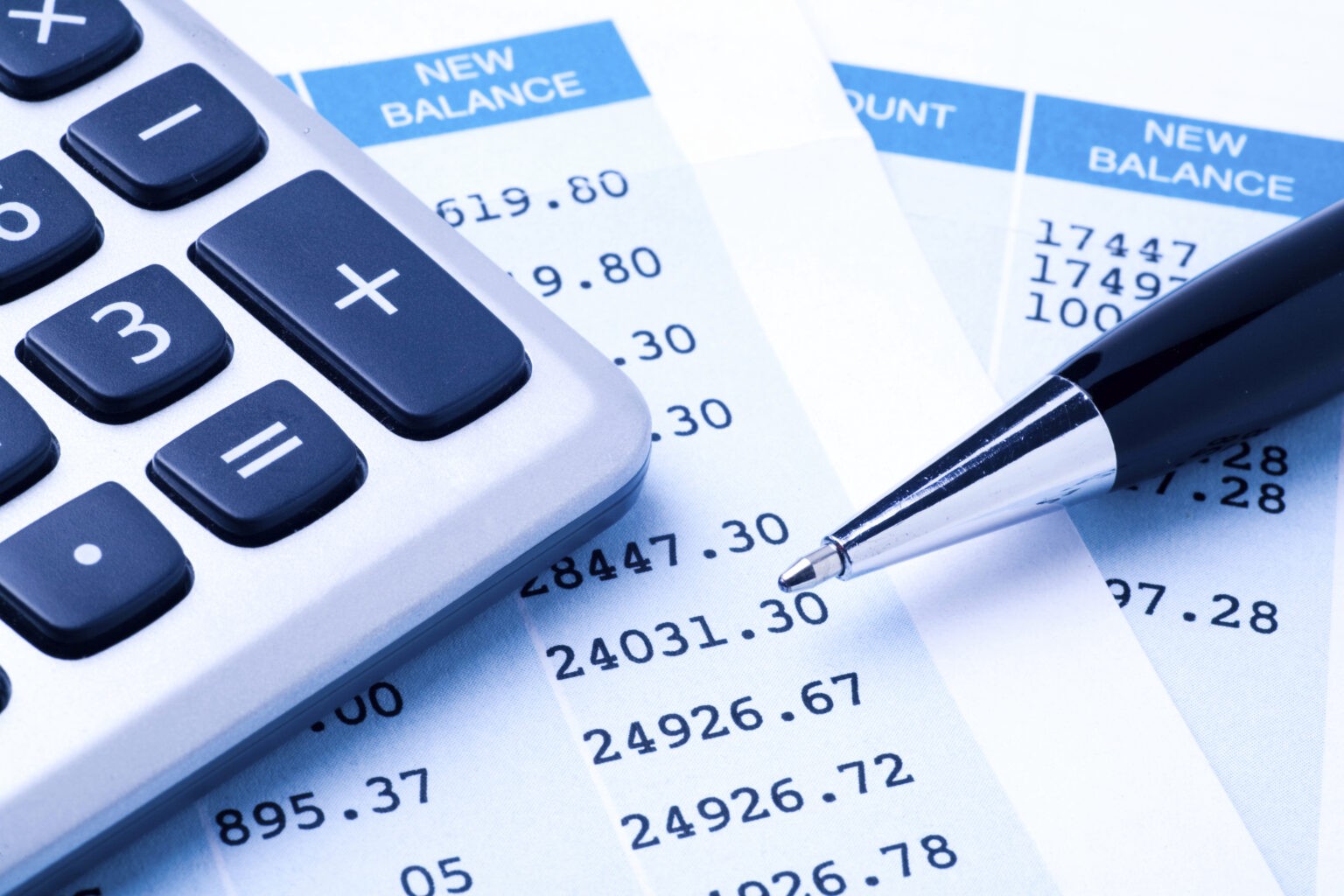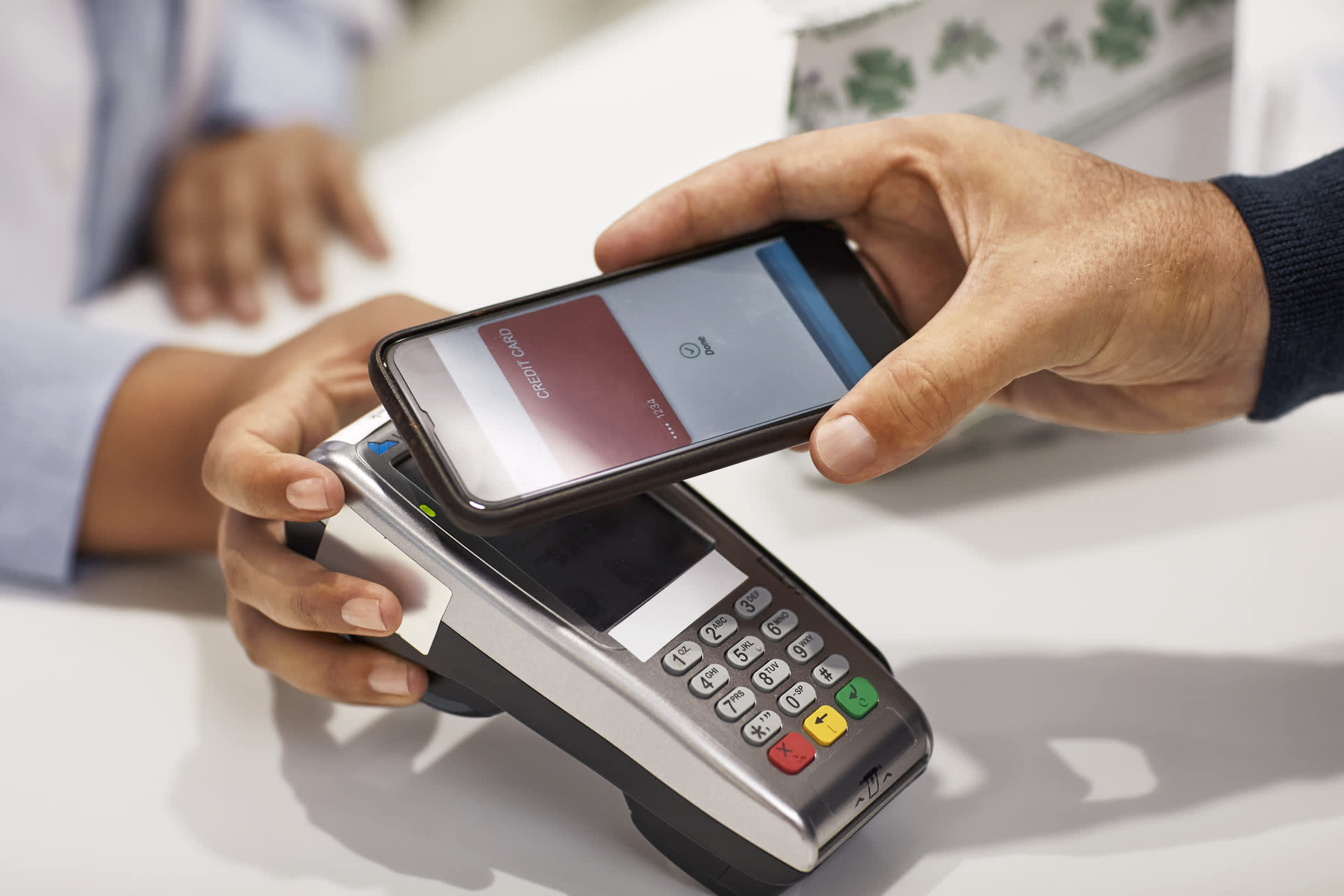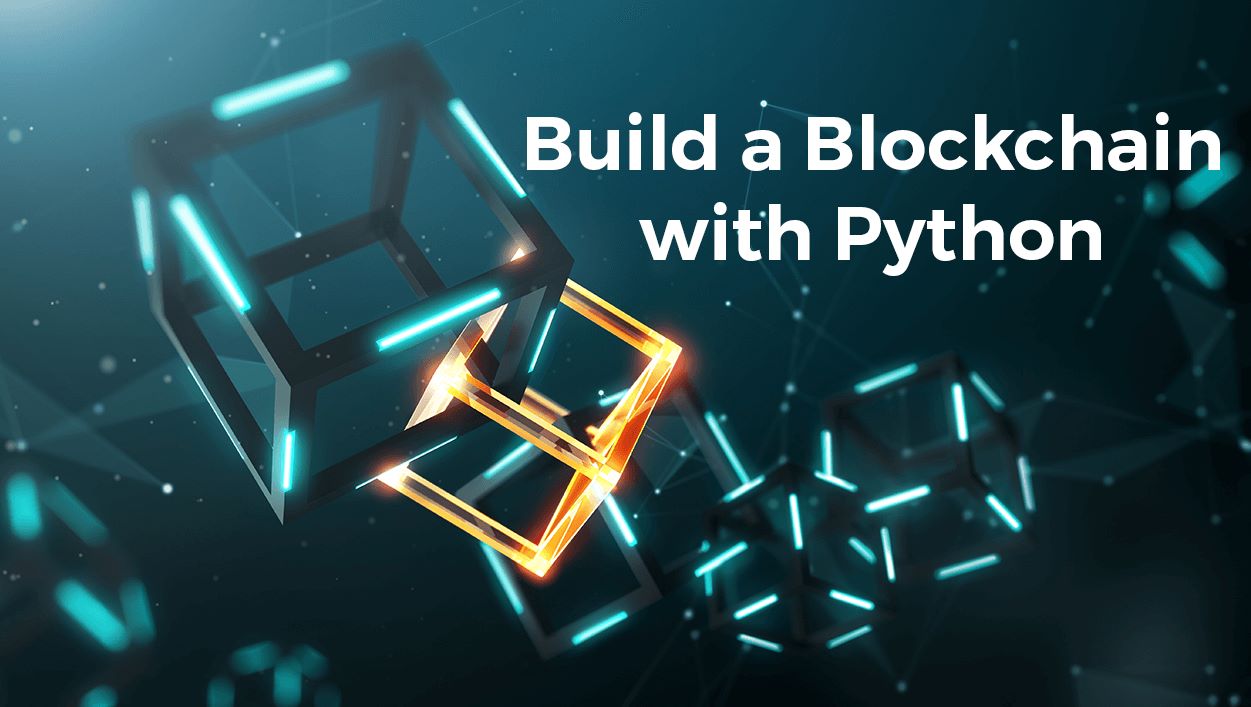

Finance
How To Create Blockchain
Published: October 23, 2023
Learn how to create and implement blockchain technology in the finance industry. Enhance security, transparency, and efficiency in your financial transactions.
(Many of the links in this article redirect to a specific reviewed product. Your purchase of these products through affiliate links helps to generate commission for LiveWell, at no extra cost. Learn more)
Table of Contents
- Introduction
- Understanding Blockchain Technology
- Step 1: Define the Purpose and Use Case
- Step 2: Select a Consensus Mechanism
- Step 3: Design the Data Structure
- Step 4: Establish a Peer-to-Peer Network
- Step 5: Implement Security Measures
- Step 6: Create Smart Contracts
- Step 7: Test and Debug the Blockchain
- Step 8: Launch and Maintain the Blockchain Network
- Conclusion
Introduction
The advent of blockchain technology has transformed numerous industries, including finance. Blockchain, originally developed for the cryptocurrency Bitcoin, is a decentralized and immutable digital ledger. It allows for secure and transparent transactions without the need for intermediaries like banks or governments. This revolutionary technology has paved the way for countless innovative applications and has the potential to disrupt traditional financial systems.
Creating a blockchain may seem daunting, but with a clear understanding of the underlying principles and careful planning, it can be achievable. This article will walk you through the essential steps of creating a blockchain, providing you with a comprehensive guide to get started.
Before we delve into the technical aspects, it is crucial to define the purpose and use case for your blockchain. Understanding why you want to create a blockchain and how it will bring value is fundamental to its success. Whether you aim to streamline supply chain management, provide transparent voting systems, or enable peer-to-peer lending platforms, having a clear use case will guide your decision-making process.
Once you have identified the purpose of your blockchain, the next step is selecting a consensus mechanism. Consensus is essential in ensuring the validity and integrity of the data stored in the blockchain. There are various consensus mechanisms available, such as Proof of Work (PoW), Proof of Stake (PoS), and Delegated Proof of Stake (DPoS). Each mechanism has its advantages and disadvantages, so choosing the most suitable one for your use case is crucial.
After determining the consensus mechanism, you need to design the data structure of your blockchain. The data structure defines how the information will be stored and organized within the blockchain. The most common data structure used in blockchains is the Merkle tree, which facilitates efficient verification of transactions.
Next, you need to establish a peer-to-peer network, allowing different nodes to communicate and share information. This network is crucial for maintaining the decentralized nature of the blockchain. Implementing protocols such as the Peer-to-Peer Protocol (P2P) ensures secure and efficient communication among the nodes.
Security is paramount when it comes to blockchains. Implementing measures such as cryptographic algorithms, digital signatures, and secure key management will protect the integrity and confidentiality of the data. Additionally, incorporating mechanisms to prevent double-spending attacks and ensuring network resilience against malicious actors is vital to the security of the blockchain.
Smart contracts are a fundamental component of blockchain technology. These self-executing contracts automatically execute predefined conditions and actions based on the terms agreed upon by the involved parties. Implementing smart contracts requires programming skills, and languages such as Solidity are commonly used for this purpose.
Once the blockchain is built, it is crucial to thoroughly test and debug the system to identify any vulnerabilities or flaws. Rigorous testing can help discover and resolve potential issues before the blockchain goes live.
Finally, launching and maintaining the blockchain network requires ongoing monitoring, updates, and community engagement. Regular maintenance and updates ensure the blockchain remains secure and efficient, while fostering a thriving community will drive adoption and growth.
Creating a blockchain can be a complex endeavor, but by following these steps and with continuous learning and improvement, you can create a robust and impactful blockchain solution. In the next sections, we will explore each step in detail to provide you with a comprehensive understanding of the process.
Understanding Blockchain Technology
Before diving into the technicalities of creating a blockchain, it is essential to have a solid understanding of the underlying technology. A blockchain is a digital ledger that records transactions across multiple computers or nodes in a decentralized network. Unlike traditional centralized systems, where a single entity maintains and controls the ledger, a blockchain allows for transparency, security, and immutability through its distributed nature.
The core concept of a blockchain revolves around blocks, which contain a collection of transactions. These blocks are linked together in a linear sequence, with each block containing a unique identifier called a hash. The hash of a block is generated based on the data within it and the hash of the previous block. This linking mechanism ensures that any modifications to a specific block will be reflected in all subsequent blocks, making it nearly impossible to alter or manipulate past transactions.
One of the key features of a blockchain is its decentralized nature. Instead of relying on a central authority or intermediary, transactions are validated and added to the blockchain through a consensus mechanism. Consensus ensures that all nodes in the network agree on the validity of a transaction before it is permanently recorded. This decentralization eliminates the need for trust in third parties and provides a high level of security and transparency.
In addition to its decentralized structure, the blockchain is also characterized by its immutability. Once a transaction is recorded on the blockchain, it becomes extremely difficult to alter or delete. This immutability is achieved through the cryptographic hashing algorithm and the distributed nature of the network. It enhances the security and trustworthiness of the data stored within the blockchain.
Another essential component of blockchain technology is smart contracts. Smart contracts are self-executing agreements with the terms of the contract directly written into code. These contracts automatically execute predefined actions when specific conditions are met. By eliminating the need for intermediaries, smart contracts enable secure and tamper-proof transactions, reducing costs and enhancing efficiency.
Blockchain technology has gained significant attention in the finance industry due to its potential to revolutionize various financial processes. It enables faster and more transparent transactions, reduces the risk of fraud, and allows for innovative financial products and services. From cross-border payments to supply chain finance, blockchain technology has the power to reshape the financial landscape.
Understanding the fundamentals of blockchain technology is crucial for creating an effective and secure blockchain. It enables you to leverage the strengths of the technology and develop innovative applications tailored to your specific use case. In the following sections, we will explore the step-by-step process of creating a blockchain, providing you with the knowledge and guidance to embark on this exciting journey.
Step 1: Define the Purpose and Use Case
The first step in creating a blockchain is to define the purpose and use case for your project. Understanding why you want to create a blockchain and how it will bring value is crucial to its success. Whether you aim to streamline supply chain management, create a transparent voting system, or enable secure peer-to-peer transactions, having a clear use case will guide your decision-making process.
To define the purpose and use case of your blockchain, consider the following questions:
1. What problem are you trying to solve? Identify the pain points or inefficiencies in the existing systems that can be addressed through blockchain technology. For example, if you’re building a supply chain blockchain, you might strive to address issues of transparency, traceability, and authenticity.
2. What are the specific goals and objectives of your blockchain project? Clarify the outcomes you want to achieve. It could be reducing costs, improving efficiency, enhancing security, or increasing trust and transparency in transactions.
3. Who are the stakeholders involved? Identify the key participants and their roles in the ecosystem. Consider the perspectives of suppliers, customers, regulators, and other relevant parties. Understanding the needs and expectations of these stakeholders will help you design a blockchain solution that meets their requirements.
4. What are the legal and regulatory considerations? Evaluate the legal and regulatory frameworks that may impact your blockchain project. Ensure compliance with relevant laws and regulations, such as data privacy and security requirements, intellectual property rights, and financial regulations.
5. Are there any existing blockchain projects or solutions in your target industry? Research and analyze similar blockchain initiatives to gain insights and avoid reinventing the wheel. Identify the gaps and limitations of existing solutions and determine how your project can provide a unique value proposition.
Defining the purpose and use case of your blockchain is essential for determining its scope, functionality, and technical requirements. It lays the foundation for the subsequent steps in building a successful blockchain. Additionally, clearly articulating the purpose and use case will also help you gain support from stakeholders and attract potential users and investors.
Once you have a robust understanding of your blockchain’s purpose and use case, you can proceed to the next step: selecting a consensus mechanism. Consensus ensures the validity and integrity of transactions in a decentralized network, and choosing the right mechanism for your use case is crucial for the success of your blockchain project.
Step 2: Select a Consensus Mechanism
After defining the purpose and use case of your blockchain, the next step is to select a consensus mechanism. Consensus is crucial in ensuring the validity and integrity of transactions in a decentralized network. It enables all participants in the network to agree on the order and validity of transactions, without the need for a central authority.
There are various consensus mechanisms available, each with its own advantages and considerations. Here are a few common consensus mechanisms:
1. Proof of Work (PoW): PoW is the consensus mechanism most commonly associated with blockchain, as it is used by cryptocurrencies like Bitcoin. In PoW, participants, known as miners, compete to solve complex mathematical puzzles to validate transactions and create new blocks. The miner who solves the puzzle first is rewarded. PoW is known for its security but requires significant computational power and energy consumption.
2. Proof of Stake (PoS): In PoS, participants are chosen to validate transactions based on the number of tokens they hold and are willing to “stake” as collateral. Unlike PoW, PoS requires significantly less energy consumption and computational power since there is no need for mining. It is considered more environmentally friendly. However, PoS can raise concerns regarding wealth concentration and potential for malicious attacks.
3. Delegated Proof of Stake (DPoS): DPoS is a variation of PoS where voting is used to select a limited number of participants, known as “delegates,” who validate transactions on behalf of the network. DPoS provides fast and efficient block confirmation times but relies on the trustworthiness and integrity of the elected delegates.
4. Proof of Authority (PoA): PoA is a consensus mechanism where a group of approved validators, known as authorities, validate transactions and create blocks. Validators are known entities with a reputation to maintain. PoA is suitable for private or consortium blockchains where trust and governance are prioritized over decentralization.
When selecting a consensus mechanism, consider factors such as scalability, security, energy efficiency, decentralization, and the specific requirements of your use case. Each mechanism has its own trade-offs, and the choice depends on the needs and goals of your blockchain project.
It is important to note that the consensus mechanism can have a significant impact on the overall performance and characteristics of your blockchain network. Therefore, thoroughly researching and understanding the implications of each mechanism is crucial before making your selection.
Once you have chosen a consensus mechanism, the next step is to design the data structure of your blockchain. The data structure determines how transactions will be stored and organized within the blockchain, and it plays a vital role in the scalability and efficiency of the network.
By carefully selecting the right consensus mechanism for your blockchain, you can establish a secure, efficient, and decentralized network that is tailored to your specific use case and requirements.
Step 3: Design the Data Structure
After selecting the consensus mechanism for your blockchain, the next step is to design the data structure. The data structure determines how transactions will be stored and organized within the blockchain and plays a vital role in the scalability, efficiency, and integrity of the network.
The most commonly used data structure in blockchains is the Merkle tree, also known as a hash tree. The Merkle tree is a hierarchical data structure where each leaf node represents a transaction and each non-leaf node represents the hash of its child nodes. The root of the tree, known as the Merkle root, is a unique identifier for the entire set of transactions within a block.
Using a Merkle tree provides several benefits. First, it allows for efficient verification of transactions. By comparing the hashes of the child nodes with the root hash, participants in the network can validate the integrity of a specific transaction without having to verify every transaction in the block.
Second, the Merkle tree enables quick identification and retrieval of specific transactions. Participants can navigate through the tree to locate a particular transaction by following a path of hashes from the leaf node to the root. This efficient data retrieval is essential for scalability and performance, especially as the blockchain grows in size.
When designing the data structure, consider the following factors:
1. Transaction data: Determine the specific data that will be stored within each transaction. This could include information such as sender and receiver addresses, timestamps, digital signatures, and any additional metadata required for your use case.
2. Block organization: Decide on the maximum number of transactions that will be included in a block. This will depend on factors such as transaction volume, network capacity, and consensus mechanism. Balancing block size with transaction throughput is crucial for maintaining optimal performance.
3. Data validation: Determine the rules for validating transactions before they are added to the blockchain. This may include verifying digital signatures, checking for double-spending attempts, and enforcing any additional business-specific validation rules.
4. Privacy considerations: If privacy is a concern for your use case, consider implementing techniques such as zero-knowledge proofs or secure multiparty computation to protect sensitive information while still ensuring transaction integrity.
Designing an efficient and secure data structure is instrumental in building a functional blockchain. It provides the foundation for handling transactions, ensuring integrity, and facilitating efficient data retrieval and verification.
Once the data structure is designed, the next step is to establish a peer-to-peer network that enables communication and the sharing of information between different nodes. This network is essential for maintaining the decentralized nature of the blockchain and will be discussed in the next step.
Step 4: Establish a Peer-to-Peer Network
After designing the data structure for your blockchain, the next step is to establish a peer-to-peer network. A peer-to-peer (P2P) network allows for decentralized communication and data sharing among the nodes in the blockchain network. This network is crucial for maintaining the integrity, transparency, and security of the blockchain.
To establish a P2P network, consider the following steps:
1. Node discovery: Nodes in the network need to discover and connect to each other. There are several approaches to node discovery, such as manual peer configuration, seed nodes, or using a distributed hash table (DHT). The goal is to ensure that nodes can find and connect to other nodes in the network reliably.
2. Network communication: Implement a communication protocol that allows nodes to exchange information and synchronize data. This protocol should include mechanisms for validating and propagating transactions and blocks across the network, as well as handling network failures and ensuring data consistency.
3. Data synchronization: Nodes need to maintain a synchronized view of the blockchain. This involves sharing newly added transactions and blocks with other nodes in the network. Methods such as gossip protocols or broadcasting can be used to disseminate information efficiently and maintain consistency.
4. Network security: Implement security measures to protect the network from malicious attacks. This includes mechanisms such as encryption, authentication, and access control to ensure the confidentiality and integrity of data exchanged between nodes. Additionally, consider implementing mechanisms to mitigate the risk of Sybil attacks or distributed denial-of-service (DDoS) attacks.
5. Consensus protocol integration: Integrate the chosen consensus mechanism into the P2P network. The consensus mechanism ensures that all nodes agree on the validity and order of transactions. This integration may involve establishing a process for proposing and voting on new blocks, as well as mechanisms for reaching agreement on the state of the blockchain.
Establishing a robust and reliable P2P network is crucial for the proper functioning of the blockchain. It enables efficient communication and data sharing among nodes while providing the decentralization and security benefits that blockchain technology offers.
Once the peer-to-peer network is established, the next step is to implement security measures to protect the integrity and confidentiality of the data stored in the blockchain. These security measures will be discussed in the following step.
Step 5: Implement Security Measures
Implementing robust security measures is crucial to protect the integrity and confidentiality of the data stored in your blockchain. As blockchain technology gains popularity, it becomes a target for malicious actors. Therefore, it is important to implement the following security measures:
1. Cryptographic algorithms: Utilize strong cryptographic algorithms to secure the data stored in the blockchain. This includes using secure hash functions for hashing transaction data and digital signatures to ensure the authenticity and integrity of transactions. Encryption algorithms can also be employed to protect sensitive data.
2. Access control: Implement access control mechanisms to ensure that only authorized entities can interact with the blockchain. This involves authentication and authorization procedures, where participants are verified and granted appropriate permissions based on their roles and responsibilities within the network.
3. Secure key management: Proper key management is essential to maintaining the security of the blockchain. Securely generate, store, and distribute cryptographic keys used for digital signatures, encryption, and decryption. Implement mechanisms to prevent key theft or unauthorized access to ensure the confidentiality and integrity of transactions.
4. Secure consensus protocol: The consensus mechanism you have selected should be resistant to various attacks and vulnerabilities. Conduct thorough analysis and testing to identify and address any potential security weaknesses. Consider implementing mechanisms such as Byzantine fault tolerance to protect against malicious behaviors and ensure the robustness of the consensus process.
5. Network security: Protect the network from attacks by implementing network security measures. This may include using firewalls, intrusion detection systems, and secure communication protocols to prevent unauthorized access and secure data transmission between nodes.
6. Regular audits and vulnerability assessments: Regularly conduct audits and vulnerability assessments of the blockchain network to identify and remedy any security weaknesses. This includes analyzing code, evaluating potential attack vectors, and performing security tests to ensure the overall security of the system.
7. Emergency response plans: Prepare and document emergency response plans to handle security incidents. This includes procedures for detecting and responding to security breaches, as well as recovering and restoring the blockchain network in case of a compromise.
Implementing robust security measures is crucial to instill trust in your blockchain network. It ensures the integrity, confidentiality, and availability of data, while also protecting against potential attacks and vulnerabilities.
After implementing the necessary security measures, the next step is to create and deploy smart contracts within the blockchain. Smart contracts are self-executing contracts with predefined terms and conditions, and they play a significant role in automating and enforcing agreements on the blockchain. This process will be covered in the following step.
Step 6: Create Smart Contracts
Creating smart contracts is a pivotal step in building a blockchain. Smart contracts are self-executing contracts with predefined terms and conditions, written in code. They automate and enforce agreements, eliminating the need for intermediaries and ensuring secure and transparent transactions.
To create smart contracts, follow these steps:
1. Choose a smart contract language: Select a programming language suitable for writing smart contracts. Solidity is a popular language used for Ethereum-based smart contracts, while other platforms may have their own specific languages. Consider the capabilities and limitations of the language and choose the one that aligns with your project’s requirements.
2. Define the logic and rules: Clearly define the logic and rules that govern your contract. Specify the conditions that need to be met for the contract to execute specific actions. This can include transferring assets, interacting with other contracts, or updating the state of the blockchain.
3. Implement the code: Write the code for the smart contract based on the defined logic and rules. Ensure that the code is clear, concise, and well-structured to enhance readability and maintainability. Follow best practices and security guidelines to avoid vulnerabilities.
4. Test and debug: Thoroughly test the smart contract to identify and fix any issues or bugs. Emulate different scenarios and edge cases to verify the correctness and robustness of the code. Utilize tools such as automated testing frameworks to streamline the testing process.
5. Deploy the smart contract: Once the smart contract has been tested and deemed secure and functional, it can be deployed to the blockchain network. This involves interacting with the blockchain protocol and recording the contract on the network. Ensure that the deployment process follows the specific procedures and guidelines of your chosen blockchain platform.
6. Monitor and update: Continuously monitor the performance of your smart contracts and address any issues or required updates promptly. The blockchain environment is dynamic, and adjustments may be necessary to accommodate changing requirements or to patch vulnerabilities. Stay up to date with the latest developments and best practices in smart contract development to ensure optimal performance.
Creating and deploying smart contracts requires a solid understanding of the programming language and the specific blockchain platform. It is important to thoroughly test and review the code to ensure its reliability and security. Smart contracts play a vital role in automating processes, executing transactions, and enforcing agreements, making them a critical component of any blockchain project.
After creating and deploying smart contracts, the next step is to test and debug the blockchain network as a whole. This involves comprehensive testing to identify and resolve any potential issues or vulnerabilities, ensuring a robust and reliable blockchain. This process will be covered in the next step.
Step 7: Test and Debug the Blockchain
Testing and debugging the blockchain is a critical step in ensuring its functionality, security, and performance. Thorough testing helps identify any issues or vulnerabilities before the blockchain goes live, ensuring a robust and reliable system.
Here are some key steps to follow when testing and debugging the blockchain:
1. Unit testing: Conduct unit testing on individual components of the blockchain, including smart contracts, consensus mechanisms, and data structures. This ensures that each component functions as expected and can detect and fix any bugs or errors.
2. Integration testing: Perform integration testing to verify the interaction and compatibility of different components within the blockchain ecosystem. This includes testing how different modules communicate, how transactions are processed, and how the network handles failures or unexpected events.
3. Performance testing: Assess the performance of the blockchain network under different conditions, such as varying transaction volumes or network loads. This helps identify potential bottlenecks, scalability issues, or inefficiencies that need to be addressed.
4. Security testing: Conduct thorough security testing to identify vulnerabilities and protect against potential attacks. This may include penetration testing, code audits, and assessing the resilience of the network against various security threats, such as double-spending or denial-of-service attacks.
5. Simulated testing: Simulate different scenarios and edge cases to evaluate the behavior of the blockchain network. Test for exceptional conditions, edge conditions, and potential attack vectors. This helps uncover any unexpected behaviors or corner cases that require further attention.
6. Debugging: When issues or bugs are discovered, use debugging techniques to identify and resolve them. Analyze log files, error messages, and other diagnostic tools to pinpoint the root causes of the problems. Implement fixes and patches to ensure the stability and reliability of the blockchain network.
7. Re-testing and iteration: After making changes or fixing issues, re-test the blockchain system to ensure that the modifications have been successful. Continuously iterate this process until the blockchain network performs optimally and meets the required specifications.
Thorough testing and debugging are crucial to mitigate risks, enhance performance, and ensure the integrity of the blockchain. During this phase, it is important to involve experienced testers, security experts, and stakeholders to provide comprehensive insights and feedback.
Once the testing and debugging phase is complete, and any necessary fixes have been implemented, the next step is to launch and maintain the blockchain network. This involves deploying the network and implementing disciplined maintenance protocols to keep it secure and fully operational. This final step will be discussed in the next section.
Step 8: Launch and Maintain the Blockchain Network
After successfully testing and debugging the blockchain, the final step is to launch and maintain the network. This phase involves deploying the blockchain network and implementing a maintenance strategy to ensure its secure and efficient operation in the long term.
Here are some essential steps to consider when launching and maintaining the blockchain network:
1. Network deployment: Deploy the blockchain network on the targeted infrastructure. This could be a public blockchain network, a private network, or a consortium network, depending on your use case. Follow the deployment procedures specific to your chosen platform and ensure that all necessary software and hardware components are in place.
2. Network monitoring: Implement a robust monitoring system to continuously track the health and performance of the blockchain network. Monitor key parameters such as network activity, block creation, transactions, and resource utilization. Develop alerts and notifications to promptly address any issues or anomalies.
3. Regular updates: Stay up to date with the latest software updates and security patches provided by your blockchain platform. Regularly update the blockchain software to benefit from new features, bug fixes, and security improvements. However, be cautious when applying updates and thoroughly test them in a controlled environment before deploying them to the live production network.
4. Backup and recovery: Establish a backup and recovery strategy to protect the blockchain data and ensure its availability in case of disasters or system failures. Regularly back up the data, including transaction history and smart contracts, and store it securely. Test the backup and recovery process to ensure its effectiveness.
5. Community engagement: Foster an active and vibrant community around your blockchain network. Encourage participation, address user concerns, and keep stakeholders informed about network updates, improvements, and upcoming features. Engage with developers and enthusiasts to encourage the creation of decentralized applications (DApps) that leverage the capabilities of your blockchain.
6. Governance and consensus: Establish a governance mechanism to make decisions regarding the evolution and changes to the blockchain network. Determine how consensus decisions will be made, whether through voting, delegate representation, or other methods. Ensure transparency and effective communication among network participants to maintain trust and alignment.
7. Regular audits and security assessments: Conduct periodic audits and security assessments of the blockchain network to identify and address any vulnerabilities or weaknesses. Engage external security audits by third-party experts to ensure an objective evaluation of the network’s security posture. Following security best practices and staying informed about emerging threats is crucial to maintaining a secure network.
8. Scalability considerations: Monitor the scalability of the blockchain network and anticipate future growth requirements. Evaluate the need for scaling solutions, such as sharding, sidechains, or layer two protocols, to accommodate increasing transaction volume or data storage demands. Plan and implement scalability solutions as needed.
Launching a blockchain network is just the beginning. Continuously maintaining and enhancing the network is essential for its long-term success. Regular updates, active monitoring, security measures, and community engagement will contribute to a robust and thriving blockchain ecosystem.
As technology evolves and new challenges arise, adapt and iterate your maintenance strategy accordingly. By keeping pace with advancements and addressing emerging needs, you can continue to leverage the benefits and potential of the blockchain network effectively.
Conclusion
Creating a blockchain requires careful planning, understanding of the technology, and rigorous execution. By following the step-by-step process outlined in this guide, you can embark on the journey of building a powerful and innovative blockchain solution.
In the initial steps, defining the purpose and use case of your blockchain sets the direction and guides decision-making. Selecting the right consensus mechanism ensures the integrity and security of transactions within the network. Designing an efficient data structure and establishing a peer-to-peer network form the backbone of a decentralized and scalable blockchain ecosystem.
Implementing robust security measures is crucial to protect the data and the network from potential attacks. Creating smart contracts automates and enforces agreements, streamlining transactions and reducing intermediaries. Through thorough testing and debugging, you can catch any issues or vulnerabilities and ensure the reliability and performance of the blockchain.
Finally, launching and maintaining the blockchain network involves deployment, monitoring, updates, and community engagement. Regular audits and security assessments ensure continued security, while scalability considerations allow for future growth and adoption.
As you embark on your blockchain journey, remember that innovation is key. Stay informed about the latest advancements in blockchain technology and adapt your solution to meet the evolving needs of your industry.
Building a successful blockchain requires a collaborative effort, involving developers, stakeholders, and users. By fostering a supportive community and providing a valuable solution, you can contribute to the widespread adoption and transformational potential of blockchain technology in the finance industry and beyond.
With determination, technical expertise, and a clear vision, you can create a blockchain that not only revolutionizes financial processes but also contributes to a more transparent, secure, and decentralized future.
Now, it’s time to take the knowledge gained from this guide and turn your blockchain dreams into a reality. Start planning, start building, and start making an impact with your blockchain innovation.
